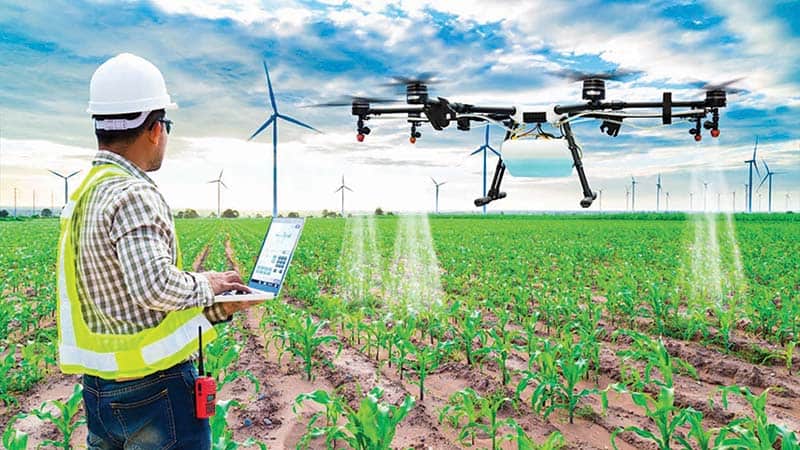Introduction
Agriculture has been the backbone of human civilization for thousands of years. Traditional farming practices have evolved over time, passed down from generation to generation, sustaining communities and nations alike. However, in the 21st century, agriculture is undergoing a dramatic transformation with the introduction of automation.
As technology advances, automation is becoming increasingly prevalent in farming. From drones monitoring crop health to self-driving tractors planting and harvesting, automation promises increased efficiency, reduced labor costs, and higher yields. However, this automation revolution is not without its challenges. In this blog post, we will delve into the intricate balance between automation and traditional farming practices, discussing the potential benefits, the hurdles faced by farmers, and innovative solutions that can pave the way for a harmonious coexistence.
The Benefits of Automation in Agriculture
Automation in agriculture offers a wide array of advantages that cannot be ignored. Here are some key benefits:
Increased Efficiency: Automated machinery and precision farming techniques can perform tasks more accurately and at a faster pace than humans. This leads to higher productivity and reduced waste.
Labor Savings: With automation taking over repetitive and labor-intensive tasks, farmers can allocate their workforce to more skilled and strategic roles, ultimately increasing job satisfaction and farm profitability.
Data-Driven Decision-Making: Automation technologies collect vast amounts of data, enabling farmers to make informed decisions about crop management, resource allocation, and pest control. This data-driven approach enhances sustainability and reduces environmental impact.
Conservation of Resources: Automation can help minimize the use of resources such as water, fertilizer, and pesticides. Sensors and monitoring systems can precisely deliver inputs where and when they are needed, reducing waste and environmental harm.
24/7 Operations: Automated machinery can work around the clock, optimizing farm operations and allowing for better management of time-sensitive tasks like planting and harvesting.
Challenges Faced by Traditional Farmers
While the benefits of automation in agriculture are clear, traditional farmers face several significant challenges when integrating these technologies into their operations:
Cost: The upfront investment in automation technology can be prohibitively expensive for many small-scale and traditional farmers. This creates a barrier to entry and leaves some farmers unable to compete.
Skill Gap: Operating and maintaining advanced automation equipment requires specialized knowledge and skills. Traditional farmers may lack the expertise to leverage these technologies effectively.
Dependency on Technology: Relying heavily on automation can make farmers vulnerable to system failures, software glitches, or cyberattacks. Traditional farming practices, which are less reliant on technology, provide a fallback in such cases.
Sustainability Concerns: Some automation practices, if not managed carefully, can lead to overuse of resources or harm to the environment. Traditional farming methods often involve more holistic approaches to sustainability.
Loss of Tradition: Automation can lead to a disconnect between farmers and their traditional practices, potentially eroding cultural and community ties that have been established over generations.
Balancing Act: Innovative Solutions
To address the challenges and preserve the best of both worlds, a balanced approach is necessary. Here are some innovative solutions that can help achieve this equilibrium:
Subsidies and Grants: Governments and agricultural organizations can provide financial support to traditional farmers looking to adopt automation. These subsidies can help mitigate the initial cost hurdle.
Training and Education: Offering training programs and educational resources to traditional farmers can bridge the skill gap. Workshops and online courses can help farmers become proficient in using automation technologies.
Hybrid Farming Models: Some farmers are exploring hybrid farming models that combine traditional practices with automation. For example, a farmer may use automation for planting and harvesting while relying on traditional methods for soil management and pest control.
Precision Farming: Embracing precision farming principles can help traditional farmers make incremental changes toward automation. This approach involves using data and technology to optimize specific aspects of farming while preserving traditional techniques for others.
Community Engagement: Encouraging community engagement and knowledge sharing can help traditional farmers adapt to new technologies while maintaining their cultural and social ties. Farmer cooperatives and local agricultural extension services can play a crucial role in this regard.
Conclusion
Balancing automation with traditional farming practices is a complex yet crucial endeavor. While automation holds the promise of increased efficiency and sustainability, it must be introduced thoughtfully to avoid leaving traditional farmers behind. By addressing the challenges through subsidies, education, hybrid models, and community support, we can create a future where automation and tradition coexist harmoniously, ensuring a prosperous and sustainable agricultural sector for generations to come.
In the ever-evolving world of agriculture, striking this balance will be instrumental in feeding the world’s growing population while respecting the rich heritage of farming that has sustained humanity for millennia.





